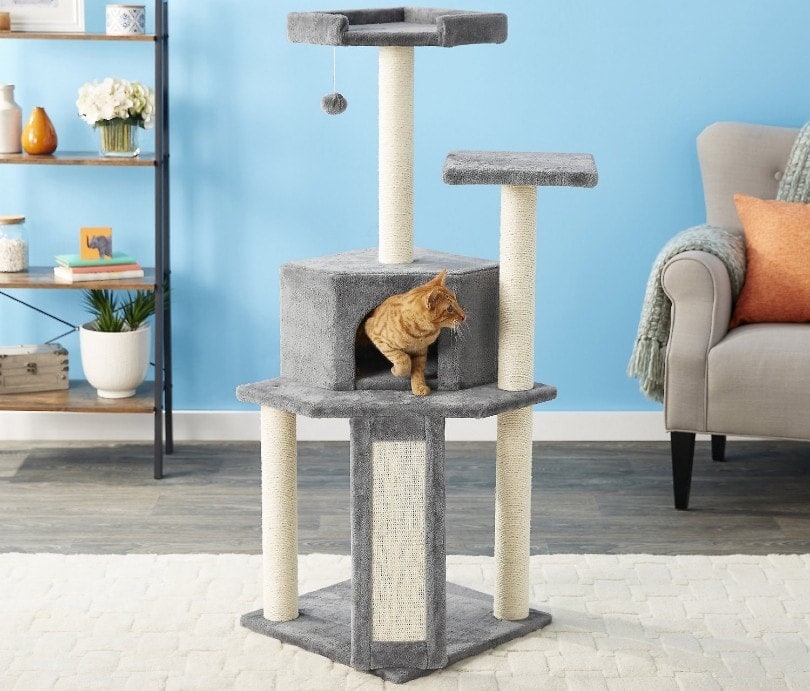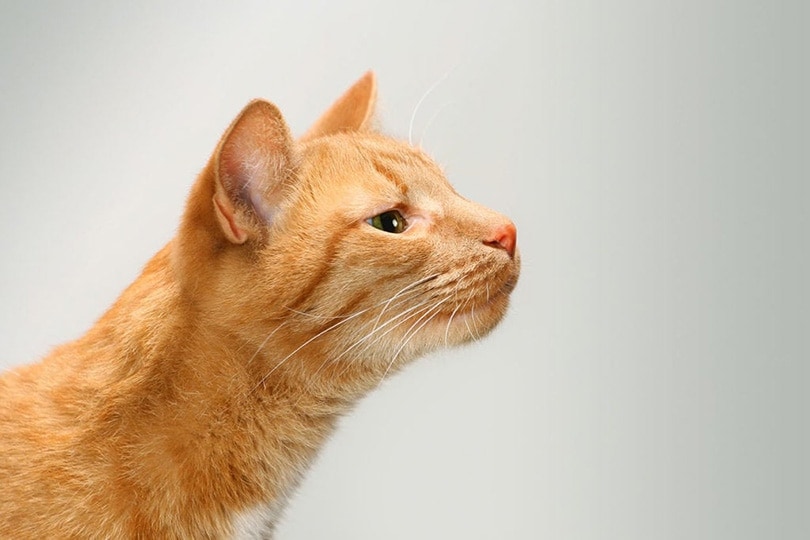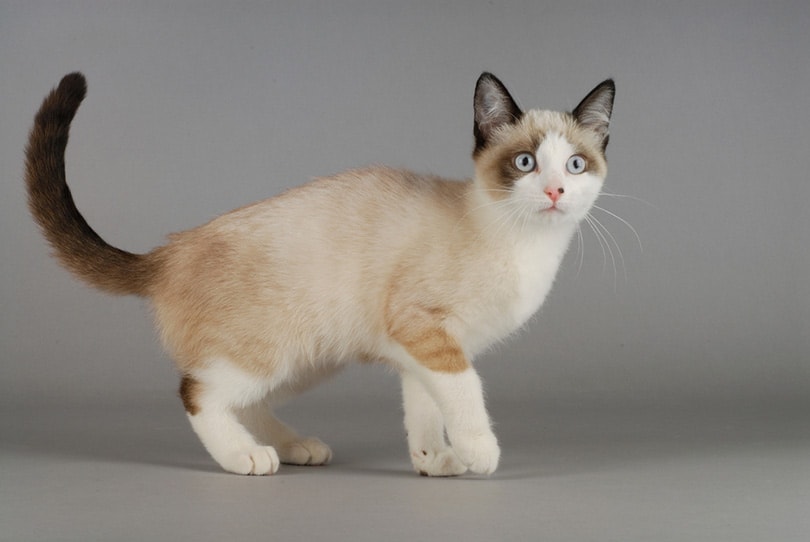How Can I Tell When My Cat Is Done Giving Birth? Vet Approved Guidance
Updated on
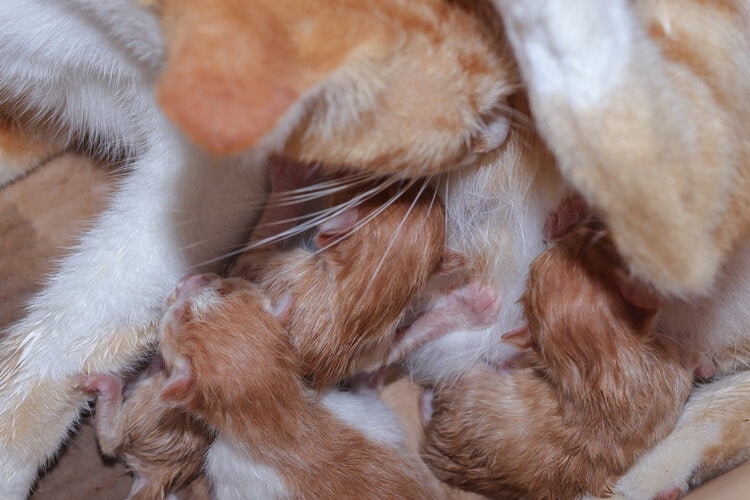
Click to Skip Ahead
The only way to know for sure that your cat is done giving birth is by working with a veterinarian. The vet may palpitate your cat’s stomach or even perform an ultrasound in some cases to check on the birthing process. Luckily, cats are often able to give birth without complications, and calling in a vet isn’t always needed.
With that said, there are several signs that birth is done that the average cat owner can pick up on.
Are There Any Signs That My Cat Is Done Giving Birth?
These include contractions stopping. Contractions are necessary for each kitten to be pushed out of the birth canal. Once all the kittens are out, contractions will stop naturally and quickly. You can tell your feline is contracting by looking at their stomach. Contractions are a complete tensing of the lower stomach.
If kittens haven’t been born for a while, it could be because your cat is done giving birth. However, if your cat is still showing signs of labor but no progress, it can also be a sign of a complication, and emergency veterinary care may be needed. This sign should only be considered when paired with a cessation of contractions and no signs of complications.
Once the birthing process is complete, your feline will likely calm down and relax. They may go to sleep and nurse their kittens. If this occurs, it could signify that the labor has ended.
Birth can last many hours, especially for larger litters. Knowing the signs of complications is important to get your cat help if necessary. Just because kittens aren’t being born doesn’t mean there aren’t any more kittens to be born.
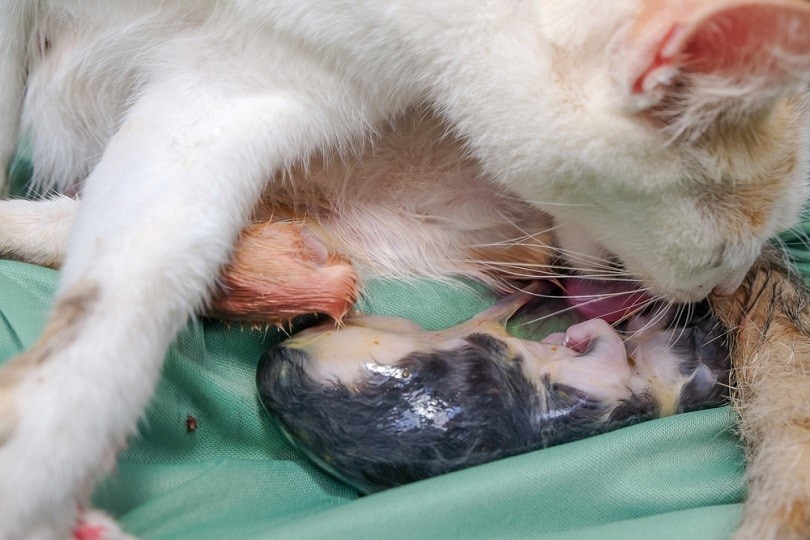
Signs of Labor Complications in Cats
It’s often easy for cat owners to confuse complications with the birth being done. If complications aren’t treated right away, this can lead to serious problems for your cat and the kittens. Therefore, you need to closely monitor your birthing cat and be aware of the signs of complications.
Here are obvious signs of labor complications in cats:
- Labor lasts longer than 24 hours: If your cat has been in labor for more than 24 hours without producing kittens, this may be a sign of a problem.
- Strong contractions for more than 30–60 minutes with no kitten produced: If your cat has strong contractions for an extended period but is not producing any kittens, this may be a sign of a blockage or other complication. Cats will have “pre-labor” with weaker contractions that won’t produce kittens.
- Weak or infrequent contractions: If your cat has weak or infrequent contractions, this may indicate a problem with the birthing process. Again, this only counts for active labor, as cats will have pre-labor contractions that don’t produce kittens.
- Green or black discharge: Green or black discharge can indicate that the placenta has separated from the uterus, which can be dangerous for the kittens.
- Your cat appears distressed, lethargic, or in pain: If your cat appears distressed, lethargic, or in pain, this may be a sign of a complication. Birthing is often uncomfortable, but your cat shouldn’t seem extremely distressed.
Always contact a vet right away if you believe your cat is experiencing a complication. These complications can be extremely serious and life-threatening for the mother and unborn kittens.
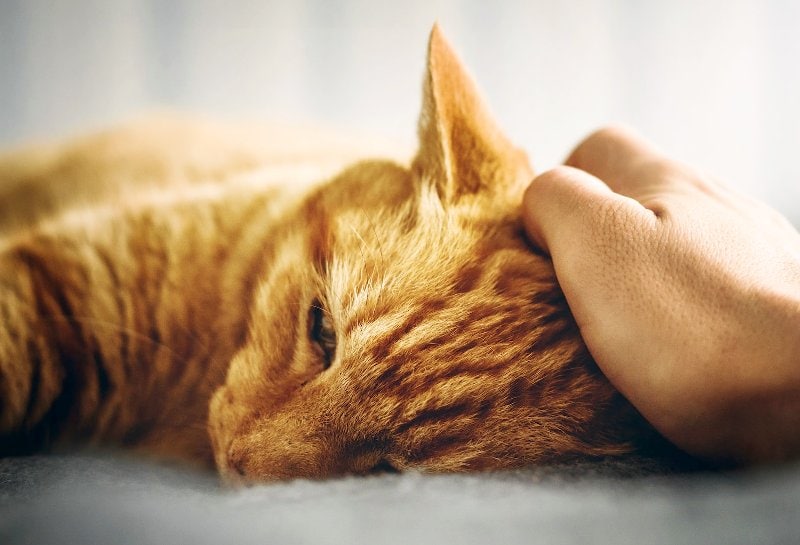
Signs Your Cat is in Labor
You can also tell when your cat is done giving birth by looking for signs of active labor. If your cat is exhibiting these signs, gives birth to several kittens, and then these signs cease, she is probably done giving birth.
Here’s what to look for when determining if your cat is in labor:
- Restlessness and pacing: As labor approaches, a cat may become restless and pace around, trying to find the perfect spot to give birth.
- Licking and grooming: During labor, a cat will lick her genitals and abdomen in preparation for giving birth. This helps to clean the area and stimulate contractions.
- Contractions: As labor begins, a cat will experience more frequent and stronger contractions over time. You may be able to see the cat’s abdomen visibly contracting.
- Vocalization: As labor progresses, a cat may start to vocalize or meow in response to the pain of contractions.
- Panting: Most cats pant while in labor. This panting continues off and on until labor is over. Once the panting stops, there are probably no more kittens.
Once labor is over, these signs should stop. The cat may appear relaxed, go to sleep, or nurse the kittens. Some cats clean themselves, but it shouldn’t be as intense as during labor.
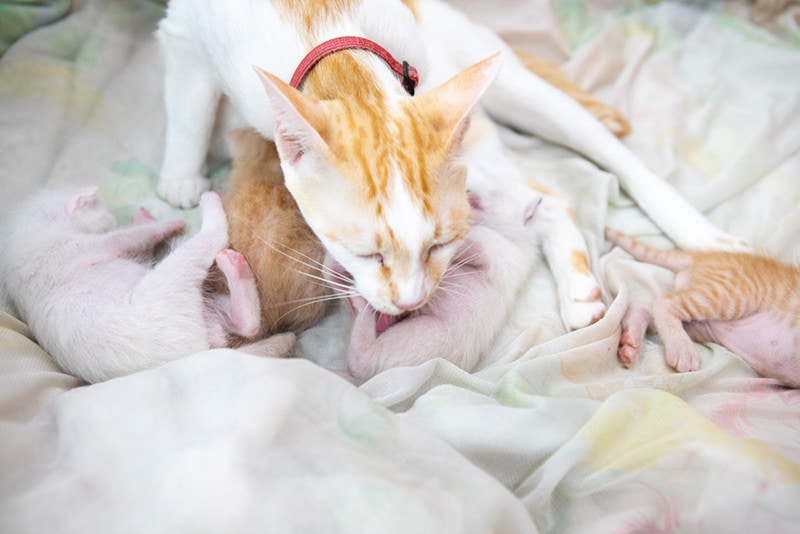
How Long Does It Take for a Cat to Finish Giving Birth?
The length of time it takes for a cat to finish giving birth can vary depending on several factors, including the size of the litter and the individual cat’s physiology. On average, a cat’s labor can last anywhere from several hours to a full day.
There are many personal anecdotes of cat owners who have experienced their cats giving birth. One common observation is that the time between each kitten’s arrival can vary. Some kittens may be born only a few minutes apart, while others may take an hour or more to arrive.
Labor can start fast, with the first kittens being born only a few minutes apart, and then slow down—or it can be the exact opposite. Every labor is different.
 Conclusion
Conclusion
It’s important to watch your cat closely during labor and be aware of the signs of complications. Luckily, most cat births are complications-free and don’t require intervention.
While there are some signs that the average cat owner can look for to determine if their cat is done giving birth, the only way to know for sure is by working with a veterinarian. Once active labor signs stop, you can bet that your cat is probably done giving birth. However, some signs that your cat is done giving birth are also signs of complications.
Remember that birth can last many hours and that every labor is different. Being prepared and vigilant can help ensure a safe and successful birthing process for your cat and her kittens. When in doubt, always call your vet.
Featured Image Credit: Cemerlang Images, Shutterstock


